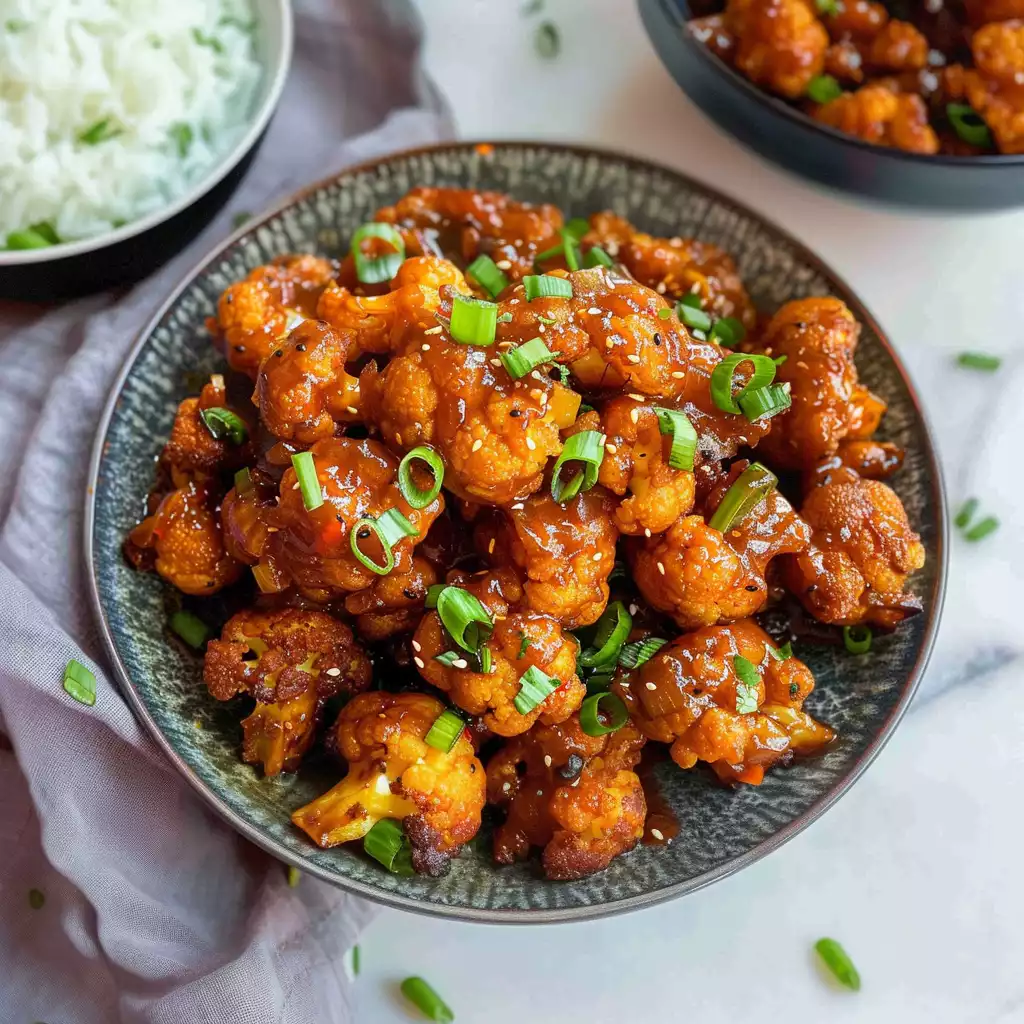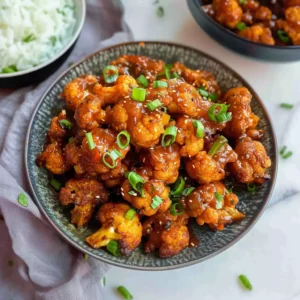
Crunchy, flavorful, and irresistibly delicious, Frying Cauliflower, also known as Gobi Manchurian, is a beloved dish that originated in the Indo-Chinese culinary fusion.
Its origins trace back to the streets of India, where it gained immense popularity for its enticing blend of spices and textures.
This recipe offers a moderate level of difficulty, making it perfect for adventurous beginners eager to explore the realm of Asian cuisine.
With its simple ingredients and straightforward instructions, you’ll be whipping up a batch of crispy cauliflower bites in no time, ready to tantalize your taste buds with its savory goodness.
Expert Tip: Ensure the cauliflower florets are cut into uniform sizes to ensure even cooking.
Cauliflower (Gobi): Cauliflower provides a hearty and nutritious base. Its mild flavor and tender texture make it the perfect canvas for absorbing the flavorful batter and sauce.
Salt: Salt enhances the natural flavors of the cauliflower and other ingredients, ensuring a well-balanced taste in every bite.
Kashmiri Chilli: Kashmiri chilli powder adds a vibrant red hue and a mild, earthy heat to the cauliflower, elevating its flavor profile without overwhelming the palate.
Black Pepper: Black pepper brings a subtle warmth and depth to the dish, complementing the other spices and adding a hint of complexity.
Turmeric Powder (Haldi): Turmeric powder not only lends a bright yellow color to the cauliflower but also infuses it with a warm, earthy flavor and offers numerous health benefits.
Corn Flour: Corn flour is the key ingredient in the batter, providing a crispy and golden coating to the cauliflower florets when fried.
Plain Flour: Plain flour helps bind the batter together, contributing to the crispy texture of the fried cauliflower.
Olive Oil: Olive oil serves as the cooking fat for preparing the flavorful Manchurian sauce, adding a rich, fruity flavor to the dish.
Garlic: Chopped garlic infuses the sauce with a pungent aroma and savory taste, enhancing the overall flavor profile of the dish.
Green Chillies: Green chillies provide a spicy kick to the sauce, balancing the sweetness of the other ingredients and adding a burst of heat to each bite.
Crushed Chillies: Crushed chillies intensify the heat of the sauce, adding depth and complexity to its flavor profile.
Onions: Onions lend a sweet and savory flavor to the sauce, creating a delicious base for the other ingredients to build upon.
Spring Onion: Spring onions add a fresh and vibrant element to the dish, imparting a mild onion flavor and a pop of color.
Soy Sauce: Soy sauce contributes a salty and savory umami taste to the sauce, enriching its flavor and adding depth.
Tomato Ketchup: Tomato ketchup provides a tangy sweetness to the sauce, balancing the heat and acidity of the other ingredients.
Vinegar: Vinegar adds a subtle tanginess to the sauce, enhancing its overall flavor profile and lending a pleasant acidity to the dish.
Expert Tip: For extra crispiness, you can double-coat the cauliflower by dipping them in the batter twice before frying.
Expert Tip: If you prefer a thicker sauce, you can add a cornstarch slurry (cornstarch mixed with water) to the Manchurian sauce and simmer until thickened.
To make this recipe gluten-free, you can substitute the plain flour with a gluten-free flour blend or rice flour. Ensure that all other ingredients, including the soy sauce and tomato ketchup, are certified gluten-free.
While fresh cauliflower is preferred for this recipe to ensure the best texture and flavor, you can use frozen cauliflower florets as a convenient alternative. Thaw the frozen cauliflower before proceeding with the recipe, and pat them dry with paper towels to remove excess moisture.
Absolutely! Feel free to adjust the amount of Kashmiri chilli powder, black pepper, and green chillies according to your personal preference for heat. You can also omit or reduce the crushed chillies for a milder version of the dish.
Here are some more recipes for you to enjoy! If you my recipes don’t forget to rate and leave a comment.
If you have any recipe suggestions, please do not hesitate to ask me. A great way to stay in contact with me is through Instagram, Facebook, Twitter and YouTube. Don’t forget to tag me @CookwithNabeela in your recipe photos!

Subscribe now to receive my latest recipes directly in your inbox. Stay up-to-date and never miss out!

I love to cook! I want to share with you my favourite, delicious family-friendly recipes. I want to inspire you to create fantastic food for your family every day.
Latest comments (2)
If you want to bake it in the oven do you put the cauliflower in with the batter coated on it?
Thanks
That’s right! If you want to make it healthier then you can also bake it 🙂